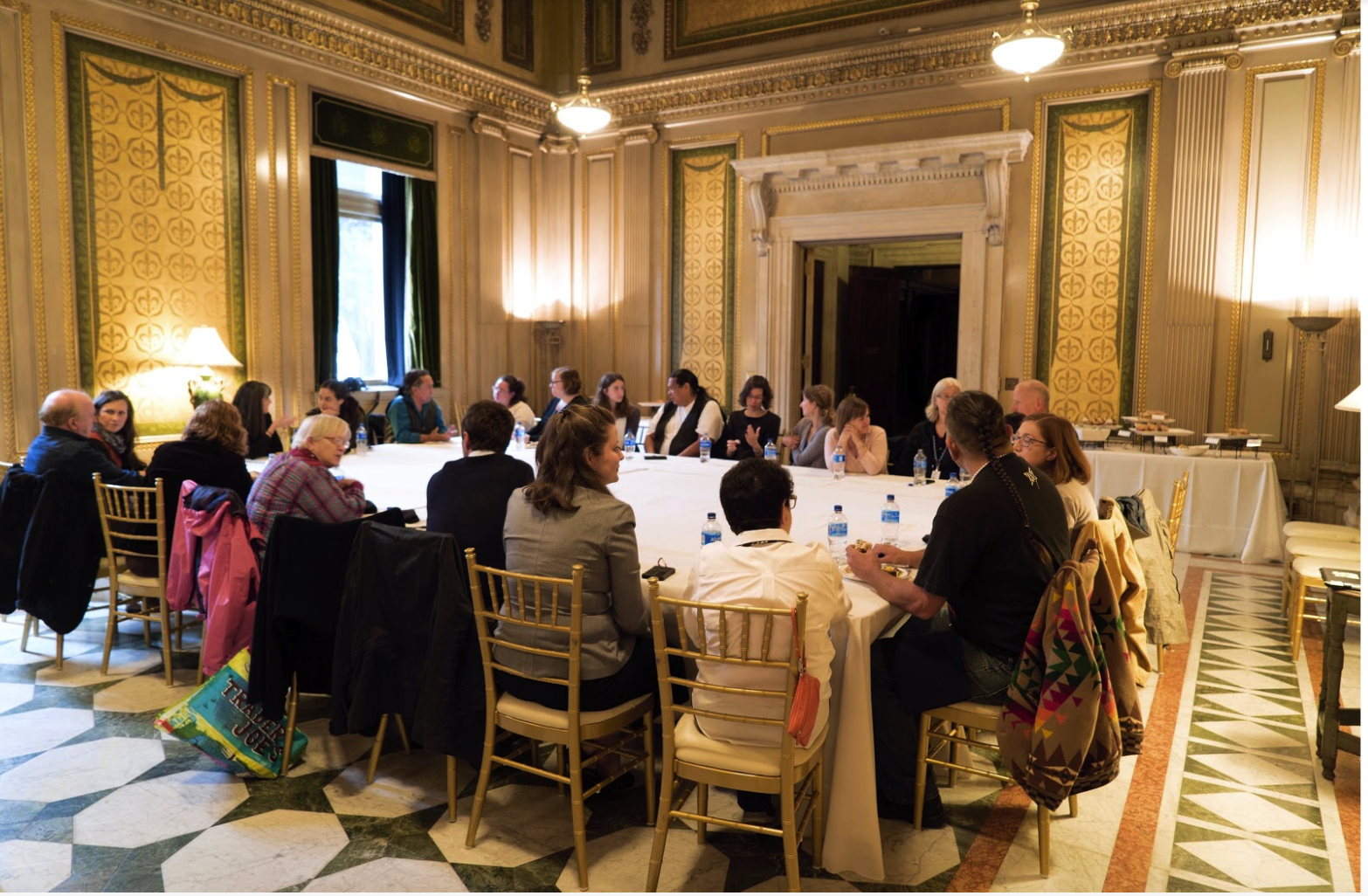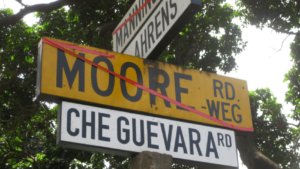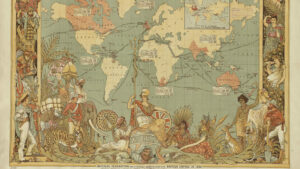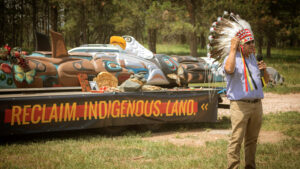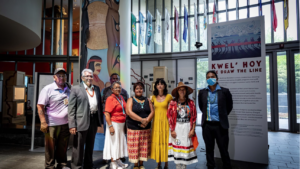12-2 pm
Kwel Hoy’: We Draw the Line is a cross-country tour, museum exhibition and series of public programs uplifting Indigenous leadership in efforts to protect water, land, and our collective future, developed by members of the Lummi Nation and The Natural History Museum, a pop-up museum led by artists, scientists and scholars.
Please join us in celebrating the debut of the exhibition at the Carnegie Museum of Natural History (CMNH) and the opening of “The Anthropocene: Museums in the Age of Humanity“, a conference at the museum organized by the International Council of Museums.
This luncheon will bring a delegation of tribal leaders involved in the exhibition together with museum staff in town for the conference, and students and faculty from the University of Pittsburgh Museum Studies Program.
Given the themes of both the conference and exhibition, we will host a discussion and strategy session exploring the role of natural history museums in the Anthropocene, and forms of museum practice that can respond to the epoch we find ourselves in. Topics of discussion include: the voice of objects, how history might be reinterpreted according to new coordinates with Native People involved in shaping those narratives, and how museums can uplift contemporary Indigenous leadership and environmental concerns.
Please RSVP for the luncheon here. Note that there is limited capacity: your spot is not guaranteed until you get a confirmation email from The Natural History Museum.
Some context for the luncheon:
The Indigenous leaders who will be in town hold positions of leadership within their tribal communities as well as in the climate justice movement, spearheading efforts to protect water, land, and our collective future.
We’d like to have a discussion and strategy session around the question of how to make museums more relevant in the Anthropocene and in a time of climate destabilization, and how collaborations between museums and Indigenous communities can help to “preserve the rich and diverse world we have inherited for posterity” (in the words of the American Alliance of Museums’ Code of Ethics).
Indigenous communities live on 3% of the Earth’s land surface but steward 80% of its biological diversity. They are hit first and worst by the impacts of climate change, and by mining, logging and extractive industries, and they are leading grassroots movements to protect the environment for future generations.
As museums are talking more and more about “relevance”, and many natural history museums are updating exhibits and programs to integrate the contemporary Native voice, how might museums collaborate with Indigenous communities AND uplift and honor their environmental struggles? Struggles, we might add, that may be considered controversial or political (e.g. the Standing Rock Sioux Tribe’s fight to stop the Dakota Access Pipeline, which more than 500 Native Nations joined).
Questions that flow from this: is it appropriate for museums to take positions? Can science and natural history museums engage contemporary environmental justice concerns? What might that look like? What practices of display, curation, interpretation, and public programming can respond to the epoch we find ourselves in? How might museum professionals and Indigenous communities collaborate around these practices?
Lastly, there is a new initiative that has been quickly gathering steam, called the Coalition of Museums for Climate Justice. Initiated in Canada, there is growing international interest and participation among museum professionals. Could our lunch group imagine ways to support this new coalition, and to support the efforts of the tribal leaders at lunch who are leading efforts to protect the “rights of nature”?

